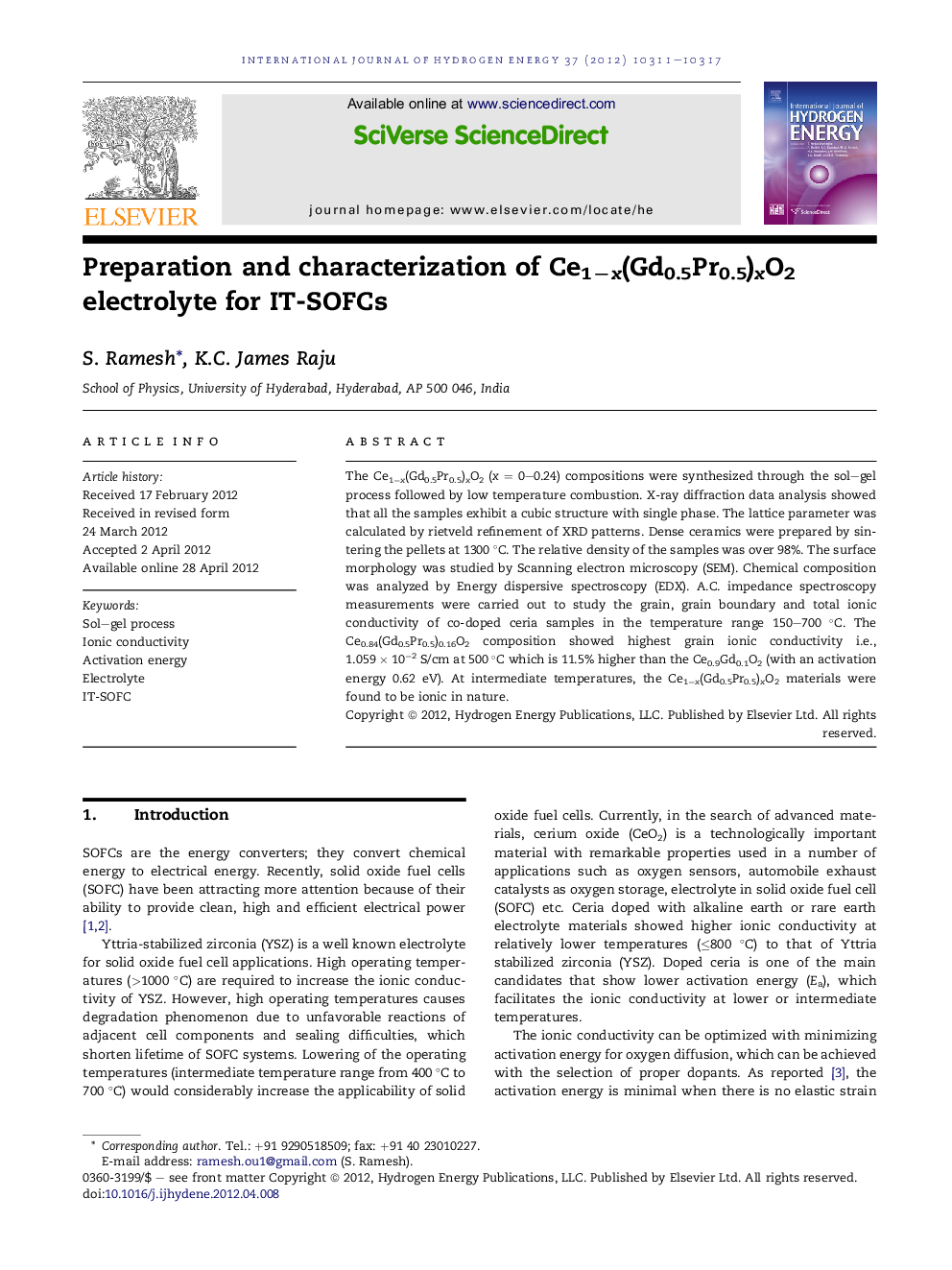| Article ID | Journal | Published Year | Pages | File Type |
|---|---|---|---|---|
| 1275219 | International Journal of Hydrogen Energy | 2012 | 7 Pages |
The Ce1−x(Gd0.5Pr0.5)xO2 (x = 0–0.24) compositions were synthesized through the sol–gel process followed by low temperature combustion. X-ray diffraction data analysis showed that all the samples exhibit a cubic structure with single phase. The lattice parameter was calculated by rietveld refinement of XRD patterns. Dense ceramics were prepared by sintering the pellets at 1300 °C. The relative density of the samples was over 98%. The surface morphology was studied by Scanning electron microscopy (SEM). Chemical composition was analyzed by Energy dispersive spectroscopy (EDX). A.C. impedance spectroscopy measurements were carried out to study the grain, grain boundary and total ionic conductivity of co-doped ceria samples in the temperature range 150–700 °C. The Ce0.84(Gd0.5Pr0.5)0.16O2 composition showed highest grain ionic conductivity i.e., 1.059 × 10−2 S/cm at 500 °C which is 11.5% higher than the Ce0.9Gd0.1O2 (with an activation energy 0.62 eV). At intermediate temperatures, the Ce1−x(Gd0.5Pr0.5)xO2 materials were found to be ionic in nature.
Graphical abstractFigure optionsDownload full-size imageDownload as PowerPoint slideHighlights► Gd3+ and Pr3+ co-doped ceria samples were synthesized through sol–gel process. ► Samples were sintered at 1300 °C to prepare dense ceramics. ► Gd3+ and Pr3+ co-dopants were selected based on Density Functional Theory (DFT). ► The Ce0.84(Gd0.5Pr0.5)0.16O2 sample showed highest grain ionic conductivity.
